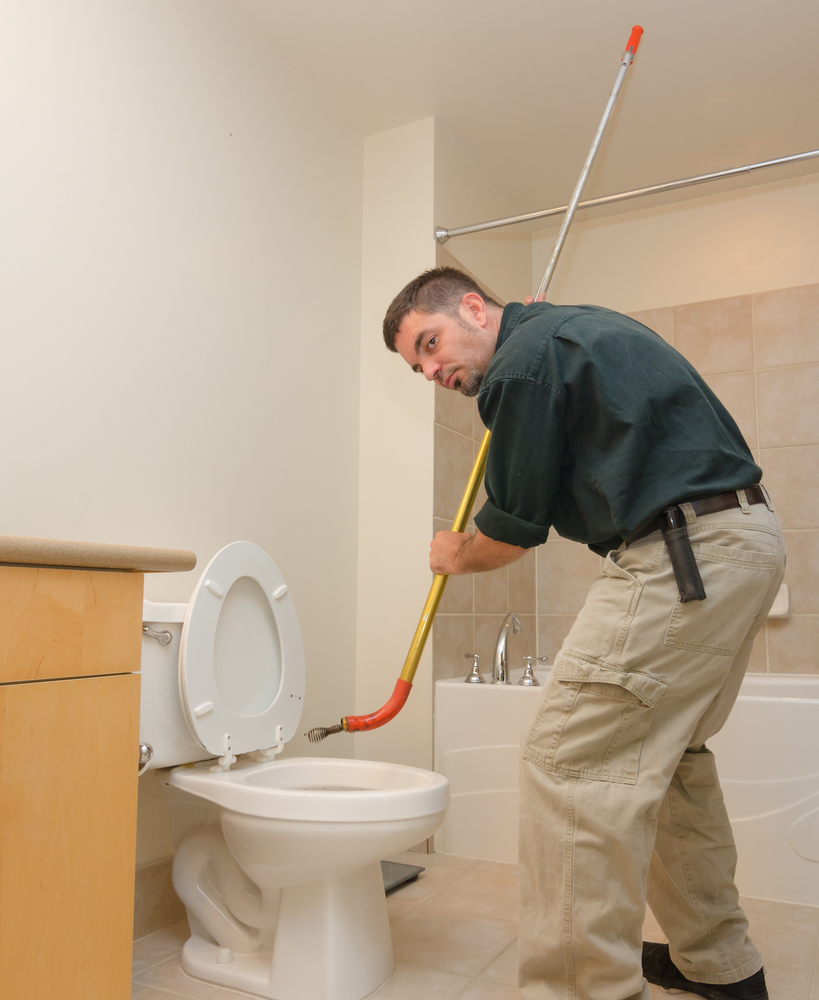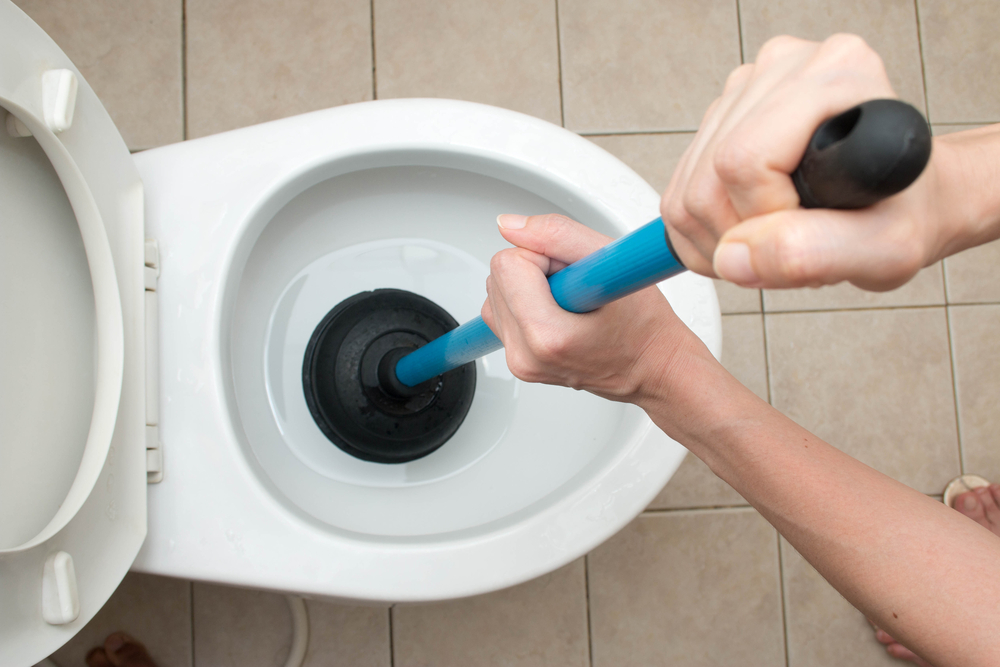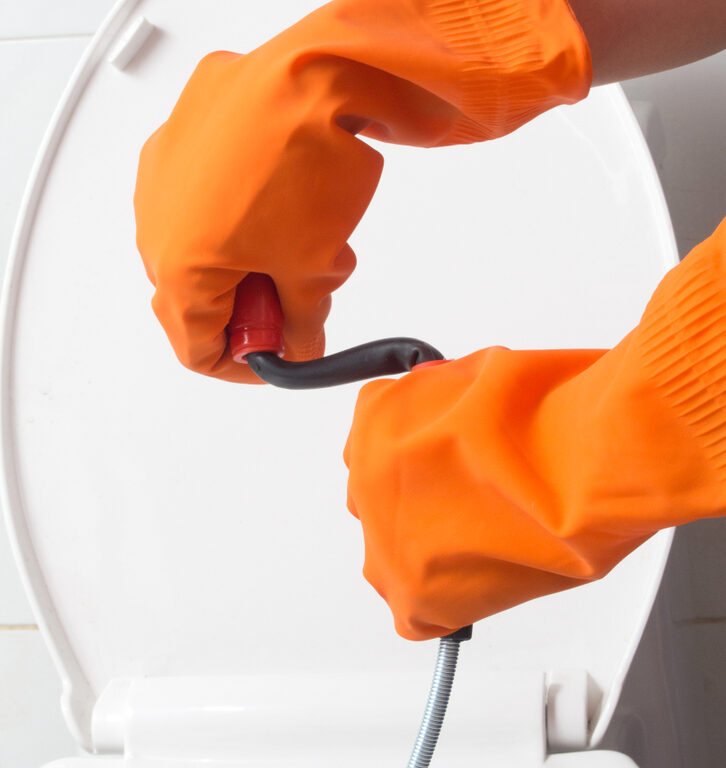Few things in life are as irritating as a blocked toilet—especially when you’re busting to go. And don’t even think about using it until you’ve unblocked it, lest you be left with a disgusting mess.
If you’ve tried your usual unclogging methods and still can’t get the toilet to flush, there is another effective option at your disposal: the plumber’s auger, AKA the toilet snake. This nifty little device can squeeze through even the tightest subterranean curves to unclog your pipes and get your toilet flushing again.
But we’ll be frank: snaking a toilet can be a messy and unpleasant task (depending on the source of the clog). But at least this easy DIY solution is a whole lot better than paying those exorbitant plumber’s callout fees.
How to Snake a Toilet: Six Easy Steps
Follow these six easy steps to snake your toilet in a few minutes flat.
1. Source a Toilet Snake
Most people don’t have a toilet snake lying around the house, so you’ll likely need to obtain one first.
The cheapest option is to hire it from your local hardware store. Not all places rent out toilet snakes; ring around to find out who does. Prices vary from $10-15 per day.
If you have chronic blockage issues, you’d be better off purchasing your own. When time isn’t of the essence, buying a toilet snake online will save you cash. During an emergency, however, you should make haste to your local hardware store.
The toilet snake comes in two distinct styles, manual and automatic, which you either hand crank or press a button to start the motor. Manual snakes aren’t that difficult to use; thus, the more expensive automatic models aren’t worth it for regular users.
- POPULO makes a fantastic automatic drain snake that comes with all the bells and whistles
- DrainX does a great value manual drain snake, which includes a pair of gloves and a disposal bag
2. Prepare the Area
Before you get to work, lay some towels or plastic sheeting down around your toilet. You could get a little splash back during the snaking process, and it’s always nice to have something there to soak up the ickiness.
Pop on a pair of disposable rubber gloves and roll up your sleeves before you begin. Place a bin or similar receptacle nearby with a plastic bag inside.
3. Snake the Toilet

Drain snakes typically extend 25 feet or more, enough to unclog most blockages.
- Place the coiled end of the drain snake into the bowl and point it towards the back end.
- Start turning the cranking handle in a clockwise direction (or press the extend button on a motorized device) to push the snake through the drain.
- Keep turning until you feel some resistance. You’ve now reached the source of the clog.
The plumber’s auger is specially designed to snake its way through curvy pipes, so you should have no trouble weaving through the S bend.
4. Retrieve the Clog
The best course of action is to remove the clog and pop it in the bin—no need to worry about reclogging your pipes.
- When you start feeling resistance upon extending the snake, softly tug back on the auger.
- If you feel resistance when pulling back, you’ve likely snagged the blockage with the coil at the end of the snake.
- Wind the snake anti-clockwise to retract the coil until the surface.
- Remove the clog from the coil (your gloves come in handy here) and put it in the bin.
- Repeat the process several times until you’ve removed the blockage.
5. Or Break up the Blockage
Although retracting the clog is ideal, sometimes it’s impossible to snag it on the coil and lure it to the surface. Plan B is to break up the blockage into smaller chunks so it can flow down the pipe.
- Once you’ve extended the snake to reach the blockage, gently jiggle it back and forth, then retract it and extend it some more.
- Repeat the process several times, gently but firmly.
- When you can extend the snake further down the pipe, you’ve broken through the blockage and unclogged the toilet.
6. Clean up the Mess
Toilets are rife with bacteria, so you need to be thorough when cleaning up after the deed.
- Tie the ends of the plastic bag and put it in the garbage.
- Wash any towels you’ve laid out on the ground, even if they didn’t receive much splash back.
- Toss your gloves in the bin to avoid cross-contamination.
- Use a plunger on the toilet to get rid of any remnants of the blockage.
- Pour the recommend dosage of a chemical toilet cleaner into the bowl and flush it down (this helps dissolve the remaining blockage).
Other Ways to Unblock a Toilet
Although snaking a toilet is the most effective way to unclog stubborn blockages, easier options are available. Try these first before reaching for the plumber’s auger.
Pull Out Your Plunger

A standard plunger is enough to remove most toilet blockages.
- Insert the flange side of the plunger into the backend of the toilet bowl.
- Go easy on the first plunge; otherwise, the air bubble will cause an unpleasant splash back.
- Plunge more vigorously on subsequent pumps, alternating between hard and soft.
- Continue plunging until you’ve removed the blockage. Be patient as it could take up to 20 pumps.
The idea is to get an airtight seal on the plunger, forcing air pressure down the drain to unclog the blockage. Try smearing a bit of Vaseline around the flange’s lip to achieve a superior seal.
Pour Boiling Water and Detergent Into the Bowl
If you suspect an enormous doo-doo is blocking the pipes, then a few cups of piping hot water and a degreasing detergent could do the trick. The combo causes human waste to break down into smaller chunks and allows it to flush through.
- Pour a few cups of boiling water directly into the water within the bowl.
- Add a squirt of regular washing up liquid to the mix.
- Let the solution sit there for a few minutes to work its magic.
- Flush the solution down.
For stubborn blockages, you could try using the boiling water and detergent trick in conjunction with a plunger.
Flush Bicarb Soda and Vinegar Down the Bowl
When combined with vinegar, bicarb soda, AKA baking soda, is an uber-powerful cleaning agent that works wonders at unclogging drains.
- Mix two cups of hot water and white vinegar.
- Pour a cup of baking soda into the bowl.
- Immediately chase it down with your vinegar and water solution.
- Watch the cool volcano-like effect as the two reagents react.
- Let the solution dissolve for 30 minutes or so, then flush it down.
How to Avoid Clogging Your Toilet
Prevention is always better than cure. Take the following steps to avoid blocking your toilet in the first place.
Don’t Throw Random Things Into the Bowl
The most common cause of a blocked toilet is when non-water-soluble items enter into the bowl. In short, only two things should go in the toilet: human waste and TP.
That means tampons, pads, makeup accessories, cigarette butts, tissues, condoms, human hair (or pet hair), and wet wipes need to go in the bin. If you’ve got kids, teach them not to throw toys into the bowl. As for those “flushable wipes” you see on TV—they’re not toilet-friendly at all and cost the authorities millions of dollars in maintenance each year.
Try putting a mini bin by the toilet to convince other householders to comply.
Take It Easy on the TP
If you’re in the habit of wrapping up a long line of toilet paper for every wipe, then stop. A build-up of toilet paper is the second most common blockage cause, and it’s easily avoided by using less of the stuff with each flush.
So how much is too much?
That’s a subject of great debate. But any more than five squares per wipe with number two is unnecessary. Of course, keep on wiping until you’re clean—we’re not suggesting you walk around with ‘mud butt’ just to protect your drains.
Look Out for Potential Issues
Take note of your average water level, and keep a close eye out for variations. If it appears too high or too low, there could be a blockage down below. Failure to flush or overflowing is another tell-tale sign something is wrong.
If you get in early with a plunger, you won’t have to bother summoning the snake.
How to Snake a Toilet: Final Thoughts
Although snaking a toilet isn’t an immensely pleasurable task, it’s a sure-fire way to clear hard-to-remove blockages. We’ve outlined the entire process in our simple step-by-step guide.
The easiest option, of course, is to avoid clogging up your drains in the first place—think twice about what you throw into the bowl.
